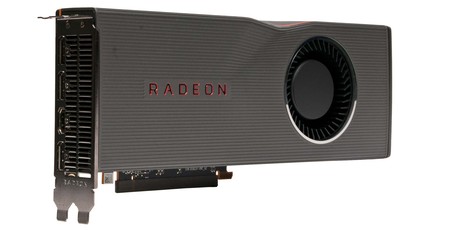
The Card
The reference Radeon RX 5700 XT serves as a baseline in terms of thermal, electrical, and gaming performance. This is useful for us as reviewers, and it means board partner variants should always be at least as good as if not better than this card, whereas the same cannot be said for Nvidia’s Founders Edition cards, which often make more basic third-party SKUs look poor by comparison.
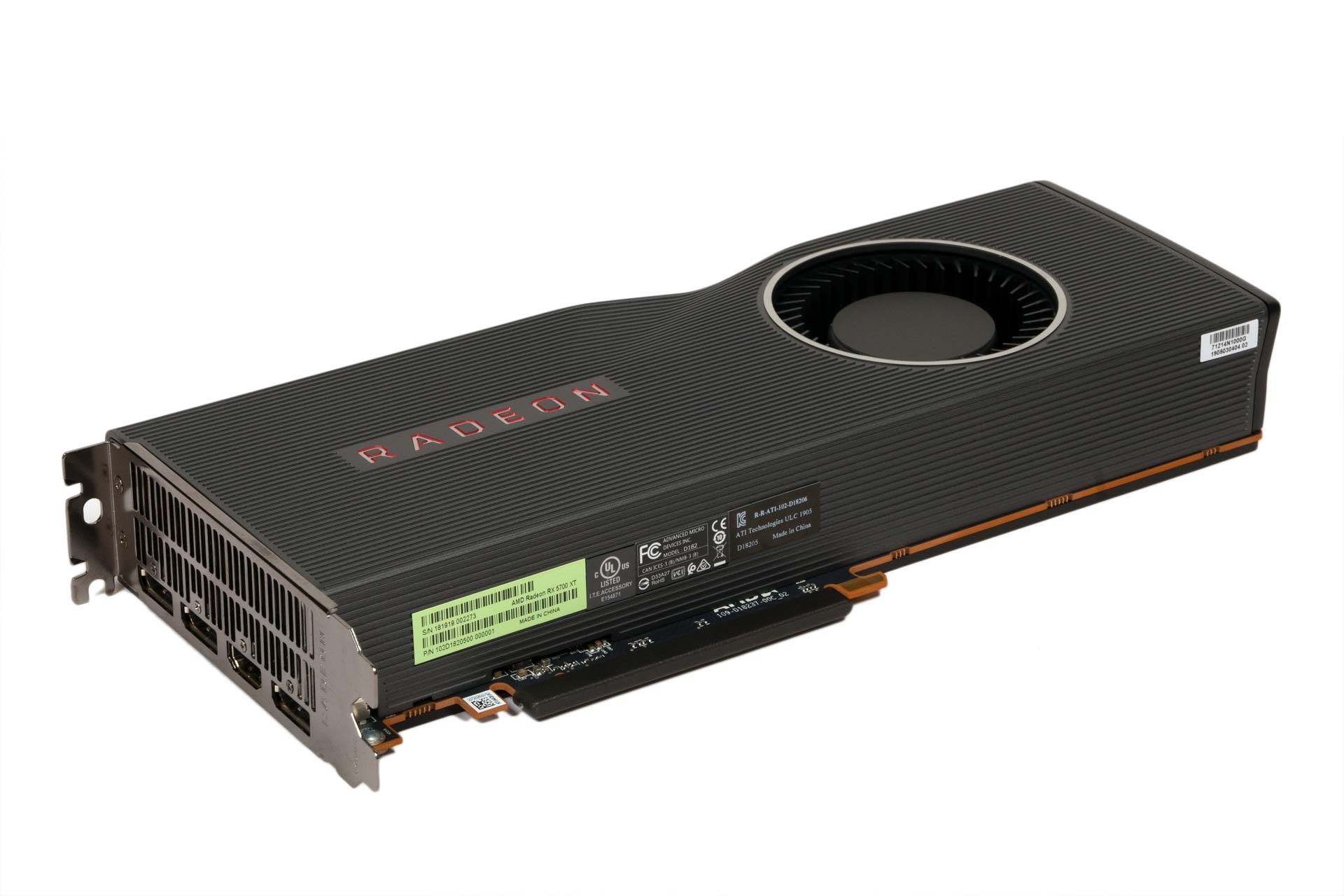
The card is thankfully solid and feels well built, largely thanks to the aluminium alloy shroud, which is complemented by a backplate. There are grooves adorning the shroud, some red highlights and a red Radeon logo along the top edge, but the finish isn’t up to Nvidia Founders Edition standards.
By far the strangest features of this card is what AMD describes a ‘contour design’ but which we’d suggest looks more like a dent. For clarification, the card has not been damaged, and this really is how it looks, with AMD claiming that the contour benefits airflow and acoustics.
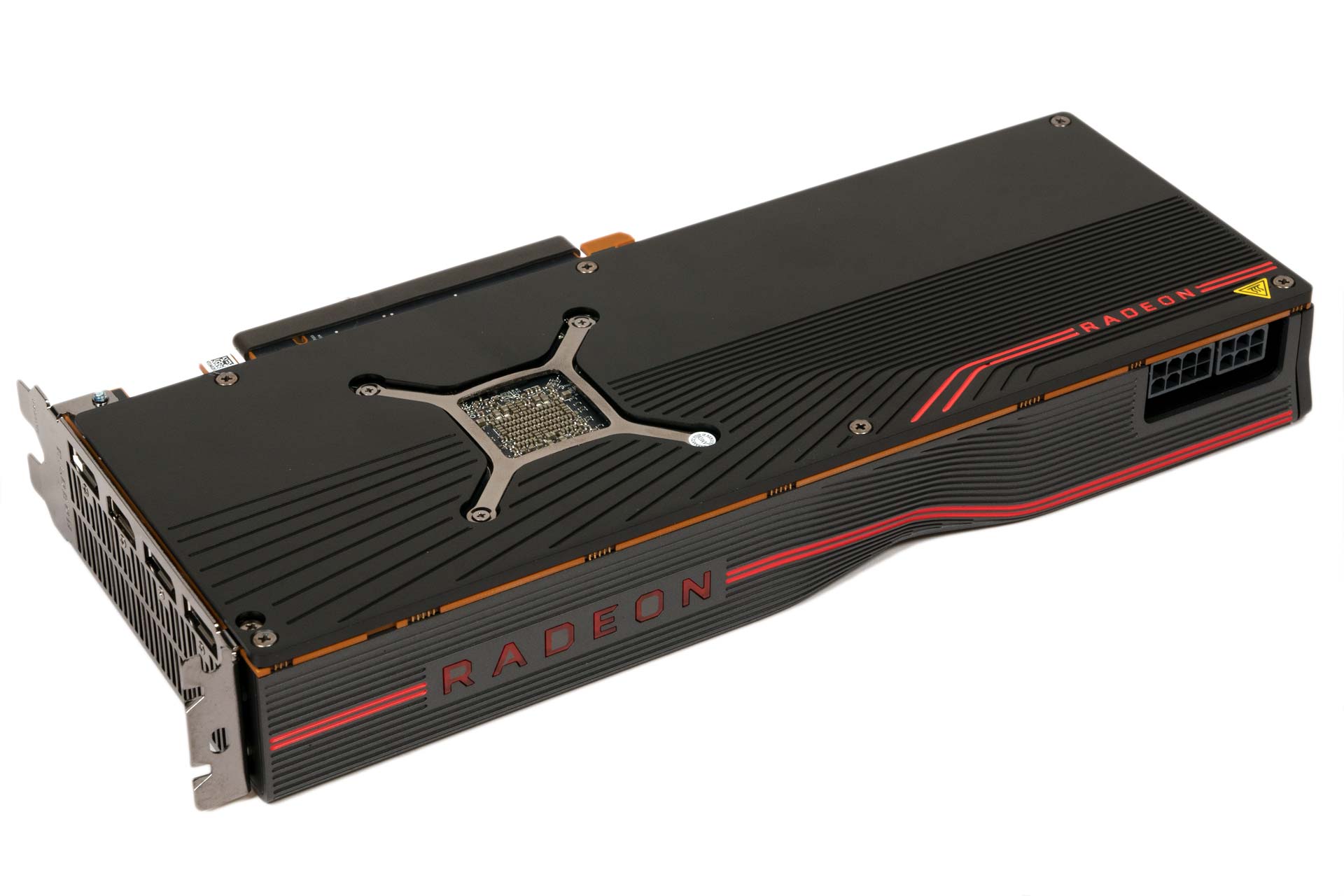
AMD has long since abandoned dedicated multi-GPU connectors (CrossFire in AMD parlance), and the Radeon RX 5700 XT has no hardware or driver-level support for it. The company doesn’t prevent games running the Vulkan or DX12 APIs from leveraging multi-GPU setups, but it’s solely down to developers to enable and optimise this.
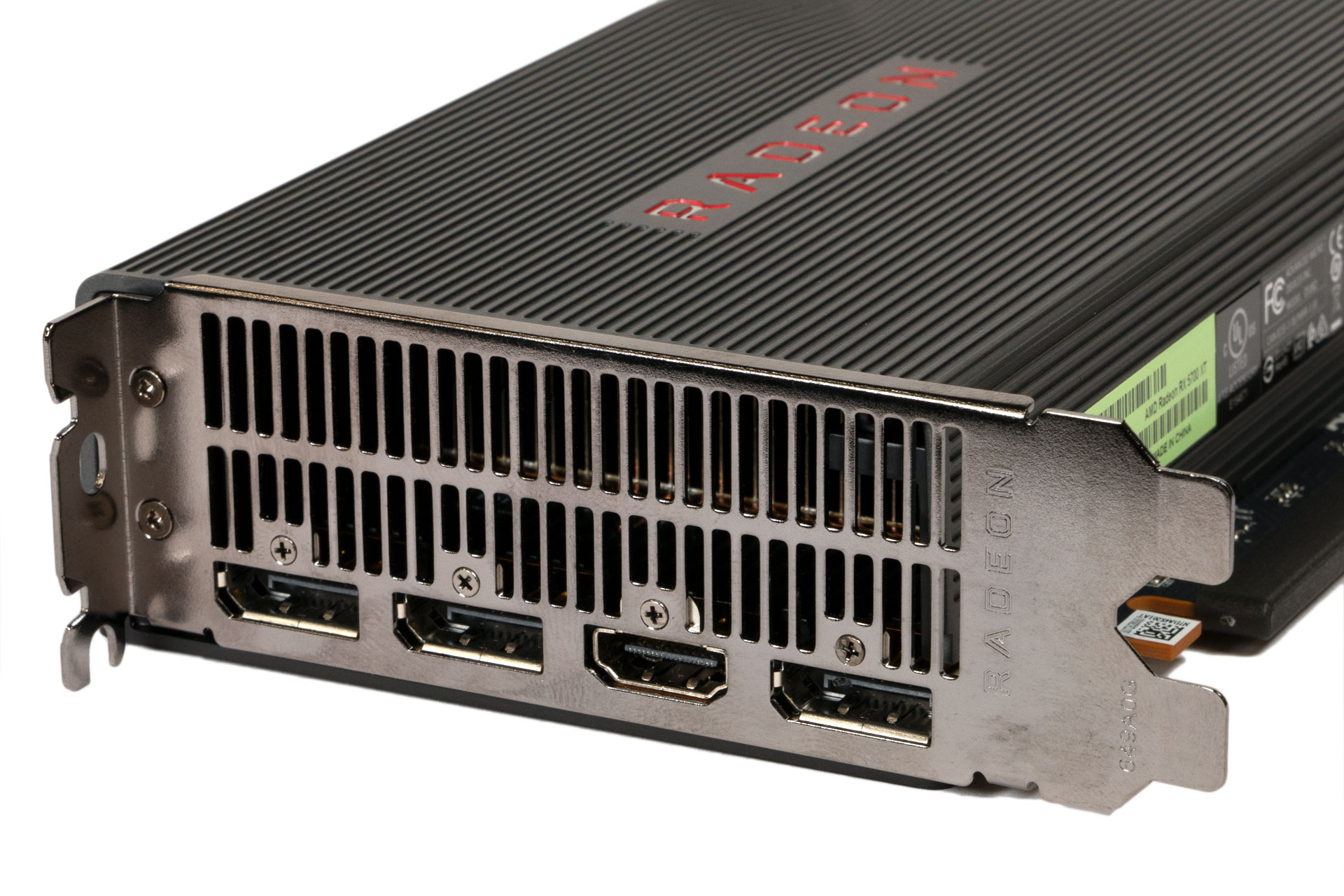
A trio of DisplayPort 1.4 headers are joined by one HDMI 2.0b header on the rear I/O panel, which is a pretty standard and useful combination. The card supports FreeSync 2 HDR, but AMD hasn’t chosen to adopt the USB-C VirtualLink standard that you get on Nvidia cards. This allows data, video, and power to be sent to next-gen VR headsets via a single cable.
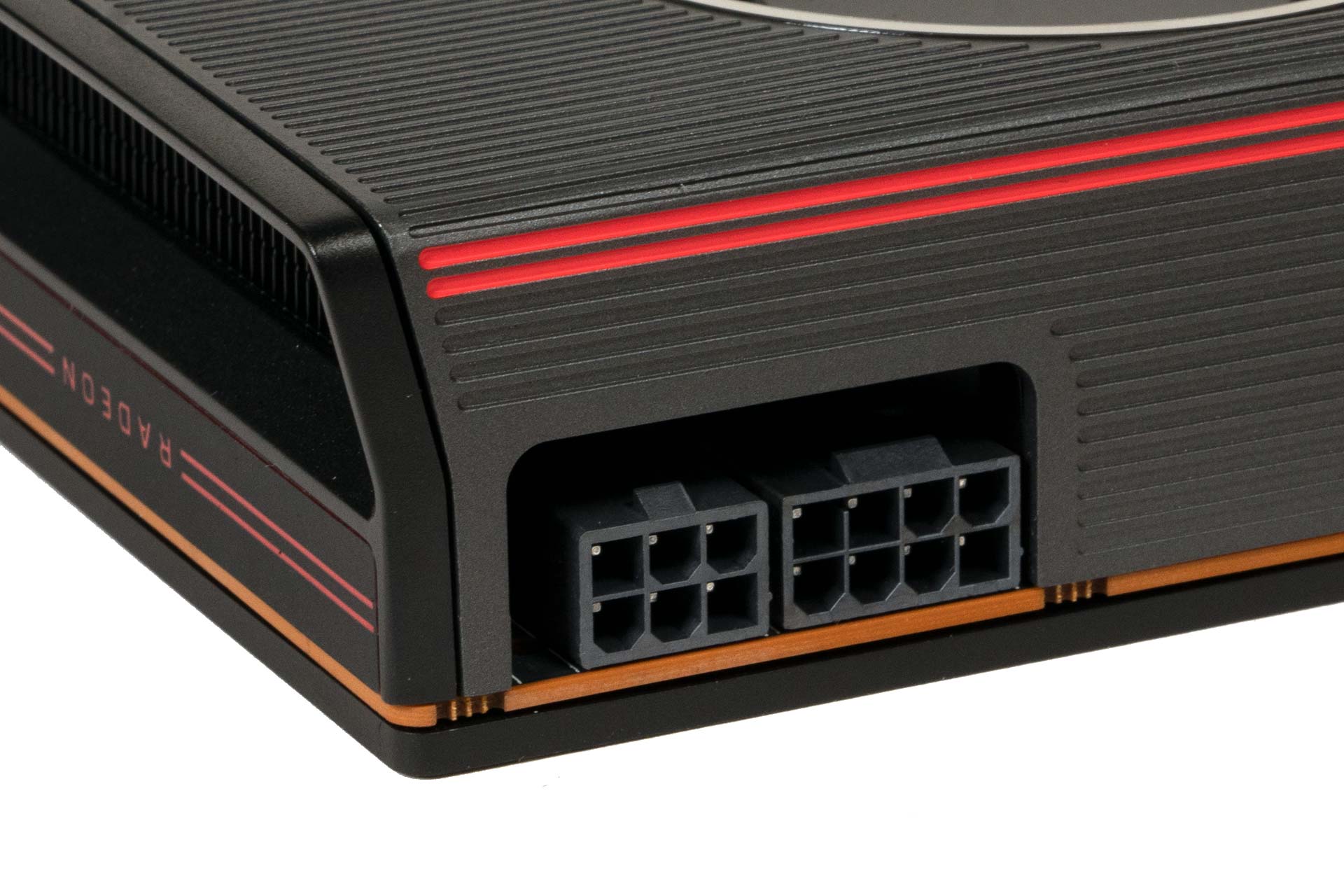
The eight-pin/six-pin PCIe combination delivers up to 225W of power to this card, which is rated for 225W TDP. Given that the PCIe 4.0 slot can deliver up to 75W, this all checks out and gives a fair degree of potential overclocking headroom.
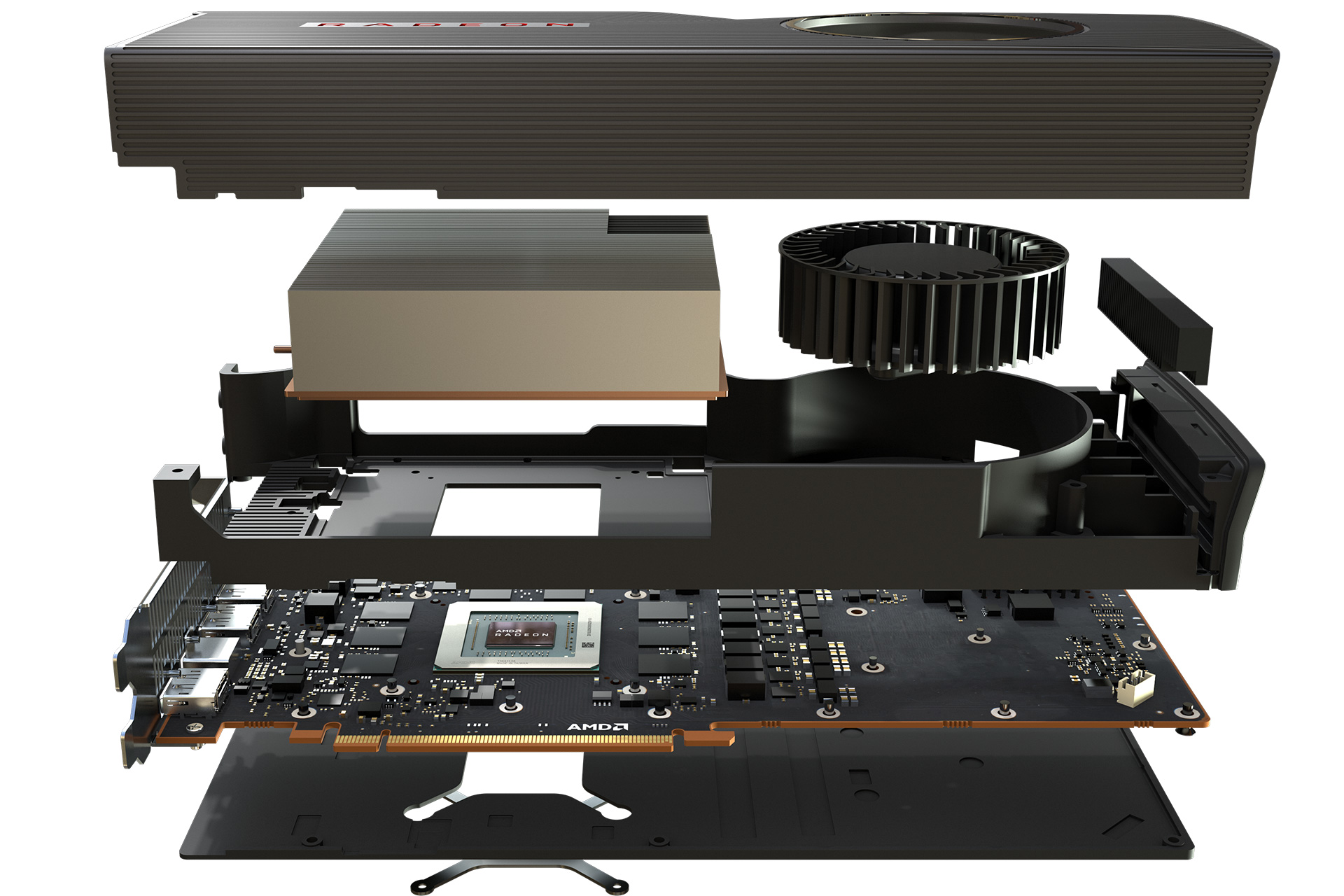
For its current flagship Navi part, AMD is using a vapour chamber heatsink to cool down the GPU, much like Nvidia does on its RTX 2070 Super. Interestingly, AMD is using graphite pads to cool the GPU rather than traditional thermal paste, claiming this was done to keep thermal properties more consistent through repeated thermal cycling (i.e. the constant heating and cooling that any graphics card will go through). It’s also using a metal contact plate, which we assume is cooling the memory and VRMs via thermal padding (we’ve not had a chance to disassemble it and check). Air from the single radial fan will be exhausted nearly entirely out of the rear I/O panel; this fan is not semi-passive and will remain on at all times.
The card is served by a seven-phase digital VRM setup, which we believe is a 6+1 configuration.
Specifications
- Graphics processor AMD Radeon RX 5700 XT (Up to 1,755MHz Game Clock)
- Pipeline 2,560 stream processors, 160 texture units, 64 ROPs
- Memory 8GB GDDR6, 14Gbps effective
- Bandwidth 448GB/sec, 265-bit interface
- Compatibility DirectX 12, Vulkan, OpenGL 4.5
- Outputs 3 x DisplayPort 1.4, 1 x HDMI 2.0b
- Power connections 1 x eight-pin PCIe, 1 x six-pin PCIe top-mounted
- Size 267mm long, dual-slot
- Warranty TBC

MSI MPG Velox 100R Chassis Review
October 14 2021 | 15:04

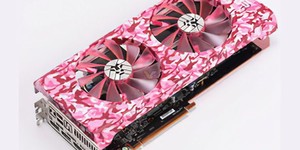
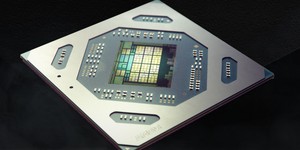
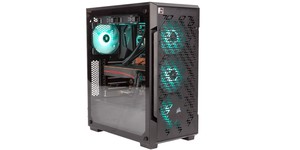




Want to comment? Please log in.